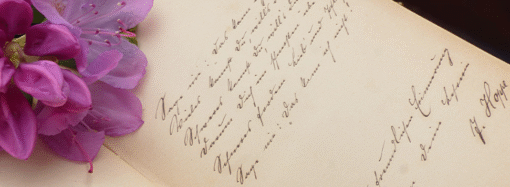Most of us know teaching pioneer Anne Sullivan from “The Miracle Worker,” a story based on the autobiography of Helen Keller that has been made into several Broadway plays and movies.
The name of the story derives from Mark Twain, who declared Sullivan such; and it’s hard to disagree with Twain’s assessment. In 1887, Sullivan, at age 20, famously accepted a position to teach 7-year-old Keller, who at 19 months had been struck blind and deaf after contracting an illness (possibly scarlet fever or meningitis). Through an often grueling process, Sullivan began teaching her strong-willed, sensory-impaired pupil, who went on to become a prolific writer, suffragist, and one of the most famous women of the 20th century.
Keller attributed her growth and success to her mentor and teacher: “All the best of me belongs to her — there is not a talent, or an aspiration, or a joy in me that has not been awakened by her loving touch. I wonder if I shall ever be able to render to another a service comparable to this.”
So, how did Sullivan pull off her “miracle,” you ask? Here are five things that helped her succeed.
1. First, Obedience
When she first arrived at the Keller home in Tuscumbia, Alabama, in March 1887, Sullivan discovered her task was going to be even more difficult than expected. Her pupil was not only blind and deaf; she was unruly and spoiled, prone to violent temper tantrums. Helen’s family, no doubt anguished over her illness, had indulged their strong-willed child. Within a week of her arrival, Sullivan removed Helen from the main house and took her to a nearby cottage where she could teach Helen the discipline she’d need to learn free from interference from Helen’s parents.
2. She Took Her Student Outdoors
Research shows that there are benefits to mixing in outdoor learning. It offers greater sensory awareness, can mitigate fatigue, and enhances mental and spiritual health. In her autobiography, Helen wrote that much of Sullivan’s instruction took place in a natural environment. “We read and studied out-of-doors, preferring the sunlit, odorous woods to the house. All my early lessons have in them the breath of the woods — the fine, resinous odor of pine needles, blended with the perfume of wild grapes. Seated in the gracious shade of a wild tulip tree, I learned to think that everything had a lesson and a suggestion.”
3. She Used Repetition. Lots of It
Though repetition is an idea somewhat in disrepute these days, educators as far back as Aristotle (and probably earlier) have praised repetition as something that fosters “natural tendency.” For Sullivan, repetition was even more important, as Helen’s illness had severely impaired her ability to communicate. For the first two or three years of her education, Sullivan’s instruction consisted primarily of creating a dialogue with Helen by communicating with her pupil through their hands. She did this with Helen over and over again, continuing even when Helen struggled to keep up with her teacher. “If I did not know the words and idioms necessary to express my thoughts she supplied them, even suggesting conversation when I was unable to keep up my end of the dialogue,” Helen later wrote.
4. She Made Learning Fun
It’s a cliché, but we often forget that few things are more stimulating than learning. Sullivan was constantly finding new ways to keep Helen engaged. She changed up her lesson plans and applied Helen’s learning to ideas and surroundings she could relate to. As Helen wrote years later, “[F]or a long time I had no regular lessons. Even when I studied most earnestly it seemed more like play than work. Everything Miss Sullivan taught me she illustrated by a beautiful story or a poem.”
5. She Fed Her Mind a Healthy Diet of Great Books
Helen attributed her great thirst for knowledge largely to the choice menu of books Sullivan fed her. It was not enough that Helen defied the odds and learned to read. She was also given a delectable assortment of literary works that nurtured her mind and sparked an appetite for further learning. Practically from the moment she could read she was devouring Shakespeare (“Macbeth” and “King Lear” were her favorite), Homer, Hawthorne, Louisa May Alcott, Virgil, Defoe, Dickens, and many other works, including the Bible, which she said gave her “a deep comforting sense that things seen are temporal, and things unseen are eternal.”
—
Dear Readers,
Big Tech is suppressing our reach, refusing to let us advertise and squelching our ability to serve up a steady diet of truth and ideas. Help us fight back by becoming a member for just $5 a month and then join the discussion on Parler @CharlemagneInstitute and Gab @CharlemagneInstitute!
















Leave a Comment
Your email address will not be published. Required fields are marked with *